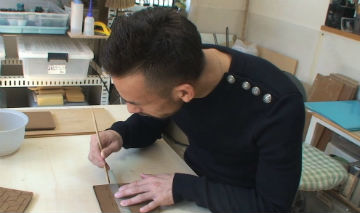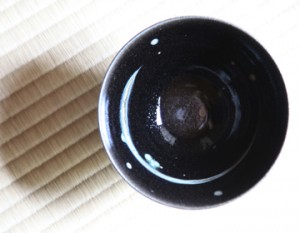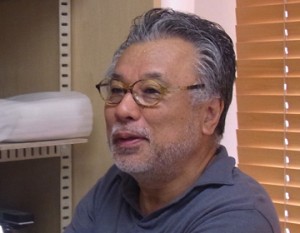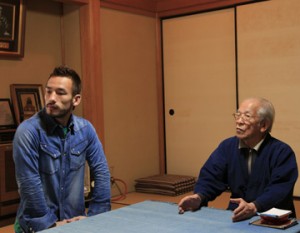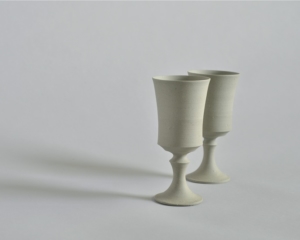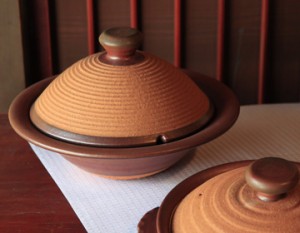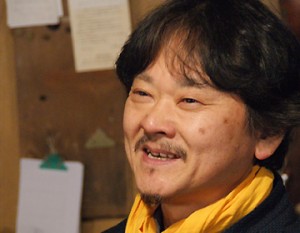Lacquer ware with great taste
Ceramic artist Kazu Nishimura is based in Sapporo and he is well known as an ”zogan” artist combining different materials. 3 years ago he started creating pieces using lacquer. He explains the fun of lacquer stating, ”I use lacquer the same way I use glaze. The colors change with even a slight temperature difference when firing.” Mainly, he uses geometric patterns, and he even draws plant patterns if he is especially drawn to a piece of work. ”The geometric patterns from Ainu does not exist in Honshu, but if you apply that to ceramics it may look like a wooden carving,” Nakata commented. The conversation expanded as they discussed materials and patterns that can look like different textures.
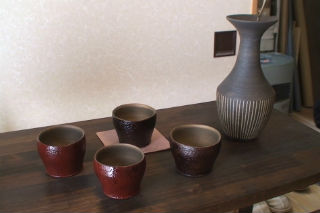
Rice bowl, thin and light, simple and unique
His idea when making dishware is to create ”a piece that can blend in grandmother’s house as well as the dining table in a modern apartment.” ”I don’t like heavy rice bowls, so I want to make one that is thin and light,” says Nishimura. ”Simple and beautiful. Unlike anything I’ve seen elsewhere.” commented Nakata, raving about the beauty and exquisite taste. Rice bowls using lacquer cannot be put in the dishwasher or microwave, but unlike ceramic rice bowls, there is no cracking sound when you hit something. And when you wrap tin around the lacquer, it sounds like metal, and it is interesting to hear the distinct ”sound” created by each of the materials.
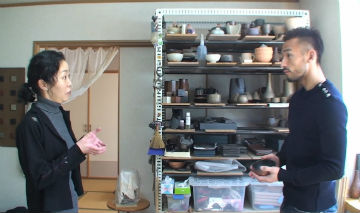
Carefully carving patterns into small plates
Even when drawing straight lines, he does not use a ruler. ”When drawing on a curved surface, it is prettier to draw a straight line by hand,” says Nishimura. Nakata actually tried his hand at making a ”zogan” plate. Carving a geometric pattern on a small plate made with Shigaraki clay. He commented, ”I can’t draw a straight line even with a ruler,” while continuing very cautiously and thoroughly without breaking his concentration. The most difficult part in the whole process is to make a pattern by masking. He taught us, ”We use liquid rubber for masking. The most difficult part is tracing it with a thin brush.”
